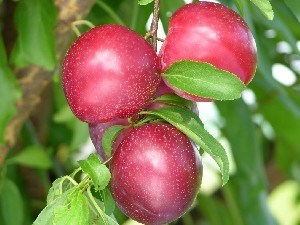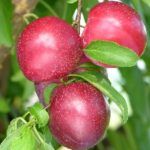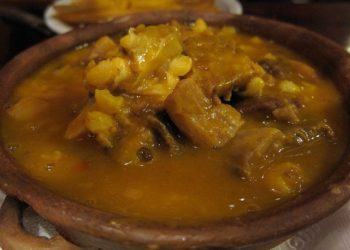For about three weeks each summer, the most glorious plums I’ve ever tasted are about fifty feet from my front porch. Rich purple Burbank plums hang seductively next to trees heavy with blood red Santa Rosa plums. Three or four, plucked from the tree and shined against my kimono make a heavenly breakfast, eaten right there in the orchard, and one I enjoy nearly daily as long as nature offers it.
In addition to being one of the world’s most luscious fruits, the plum is also one of the most interesting. It grows on every continent save Antarctica and is second only to the peach in commercial production. There are more species, subspecies and varieties of plum than of any other stone fruit. Of particular interest is the fact that modern times have seen the creation of more varieties of plums, rather than the demise of existing species which so often seems to be the case as agriculture concentrates on mass marketing. Ancient records reveal just a handful of types of plums and by the mid-16th century, only seven kinds were known in Europe. By the 19th century, American nursery catalogs offered over 150.
Thank you again, Luther Burbank
Plums belong to the large genus prunus, which counts apricots, peaches, cherries and almonds among its most popular members. The plum can be bred successfully with only one member plant, the apricot, and we can find the resulting plumcots at local farmers markets. Thank you again, Luther Burbank.
Green plums at the drive-in theater
I have a very distinct memory of falling in love with plums. I was about four or five years old, it was summer, extremely hot, and we were headed to the drive-in theater, my favorite family outing. We had a 1953 red Chevy convertible and I was small enough that I couldn’t see over the back seat, which didn’t matter because everyone expected me to fall asleep at sundown anyway. A bed was made on the seat, and I got to bring a little bag of goodies to keep me entertained and quiet until the Sandman made his visit, as my uncle always put. I don’t remember exactly what the bag contained except for several beautiful golden plums, succulent and sweet and delicious.
I never forgot those plums. The drive-in, with its rickety heaters you could hang from your window next to the in-car speakers, and the sound of cars driving over the gravel next to us, remains vivid because of them. I searched unsuccessfully for years to find yellow, golden or green plums but now, in the new millennium, they are back, available first in farmers markets and now even in some grocery store.
The best thing to do with plums, as with so much of summer’s bounty, is to eat them as soon after harvesting as possible. If you have a tree near you, you’ll need other ways to keep up with the harvest. Shrub, gelato, ice cream, sauce and preserves are all great ways to preserve plums.
Whatever you decide to do with plums, do it in their own true season. Yes, we now have plums year round, thanks to our trade agreement with Chile and modern transportation. But plums were meant to be eaten in the summer, when the days are long and the nights are warm and our spirits are cooled by the silken pleasure of summer fruit. A plum is lovely, bright and pristine and sharp, the perfect thing when the days are too hot for anything richer. A plum is not comfort food and won’t warm our bones or our spirits in the middle of winter, so enjoy them when they ripen near year and long for them when they’re gone.




